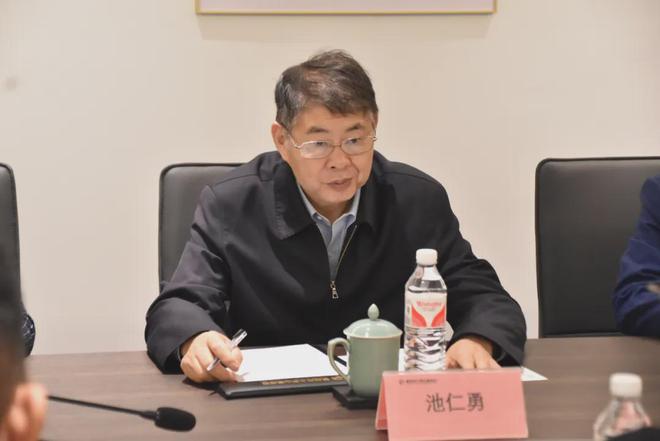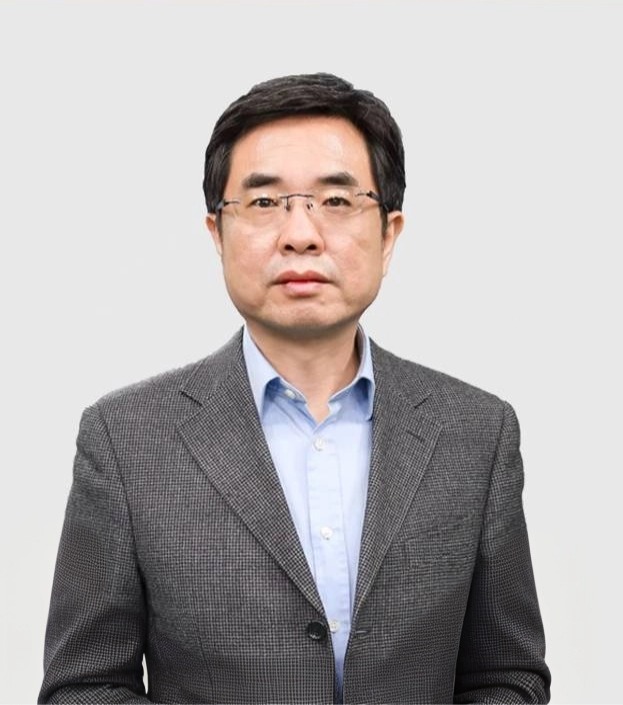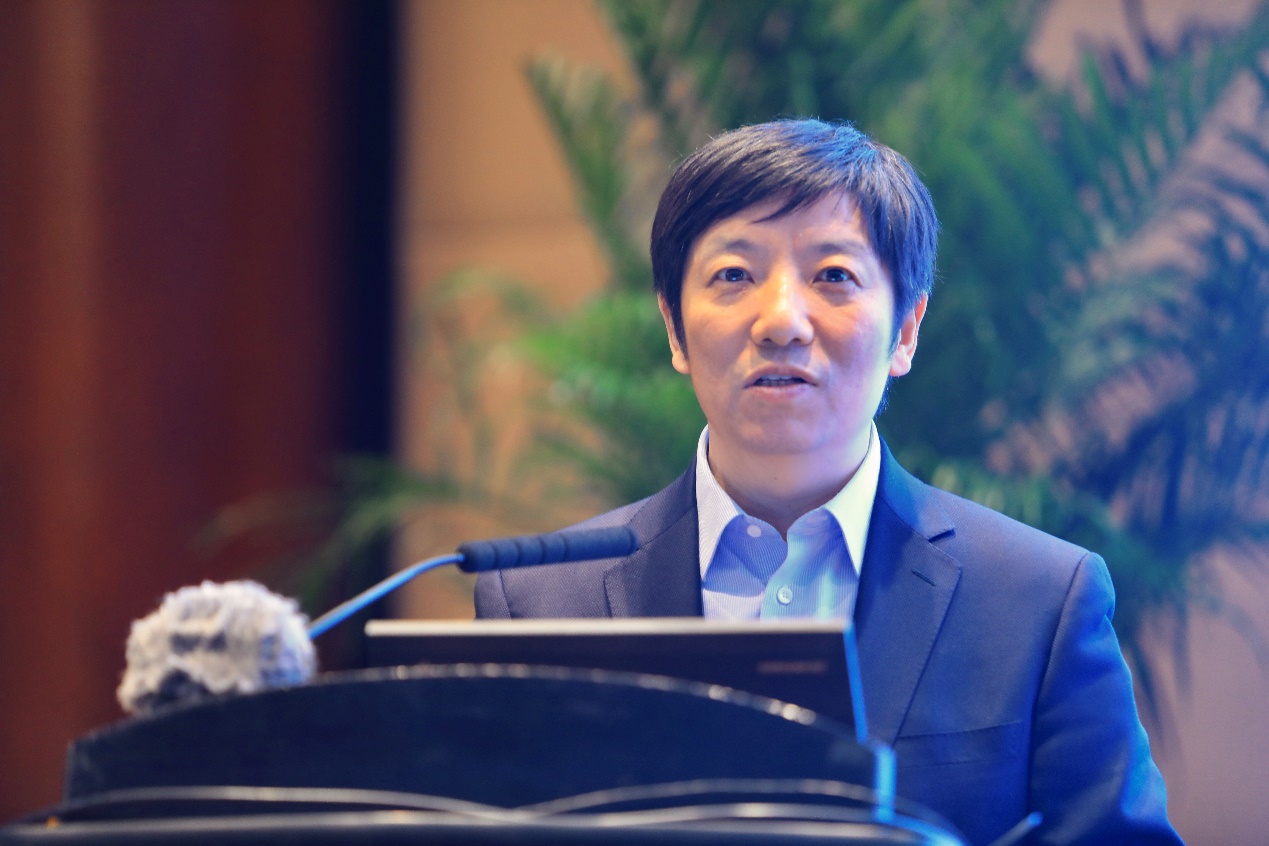学校课程实施的组织社会学分析
组织社会学的研究视角对于打开学校课程实施的“黑匣子”具有重要的理论与实践价值。本书以教师课程实施理念和行为为切入点,利用组织社会学中权力结构、冲突、沟通和领导四维分析框架,探析了学校课程实施的真实状况,提出了学校课程实施革新的策略和建议。本书认为,学校课程实施受到学校组织权力结构的制约;是一个包含组织矛盾与冲突的过程,是一个信息传递与沟通的过程,需要与之匹配新型的课程领导。
中古時期敦煌文人詩歌傳播研究
本書在系統梳理唐以前敦煌地區漢文化生成歷程的基礎上,運用文獻学方法,對中古時期(指唐五代宋初)敦煌地區文人詩歌傳播問题,作了细緻的專题研究,發現如下兩種現象:1.敦煌舆内地之間的文人詩歌交流,是自東向西的單項流傅,且吐蕃時期中原文人詩向敦煌的流傅,極有可能是中斷的。2.中原文人詩傅入敦煌以後,其接受群體不斷擴大、流傳範圍不斷擴展,個别文化素養較高的敦煌本地人士,甚至掌握了詩歌創作技能,並從事到了詩歌創作中。上述兩種現象說明,敦煌本地詩歌是在中原文人詩的長期孕育下產生的。這一结論,提示我們,在多元文化共存的中古時期的敦煌,中華文化才是敦煌地域文化的主體,敦煌以及更西的絲绸之路沿線各地,早已成為中華文化的重要组成部分。這是任何外部力量,都無法否認的歷史事實。本書最大的價值,即在於此。
产业集聚与新型城镇化互动发展研究
本书立足于“产业转移”与“劳动力回流”的“双转移”大趋势,系统梳理“双转移”视角下产城互动发展的理论内涵,结合“中心—外围”模型阐释产城互动的基本理念、内在机制及其耦合机理;归纳总结“双转移”趋势下中西部城市新区产业集聚与新型城镇化互动发展的现状与问题,构建产业集聚水平、新型城镇化水平、耦合协调综合水平测度指标体系,针对中西部城市新区产城互动发展水平进行综合评价;结合动态面板联立方程模型与系统动力学模型,剖析产业集聚与新型城镇化互动发展的影响因素与作用机理;在借鉴国内外典型城市新区产城互动发展经验的基础上,创新性提出“双转移”趋势下产业集聚与新型城镇化互动发展的战略路径设计与政策制定考量。
马克思主义基本原理专题研究
摆在读者面前的是一部学术著作,但不是一本个人独立撰写的学术专著,而是汇集了多位学者的多篇学术论文而成的学术著作。这些学者是来自北京科技大学马克思主义学院的教师们,以在2009年到2019年期间任职马克思主义学院马克思主义原理所的教师为主;汇集的是这些教师们在此期间发表的以北京科技大学为第一作者单位,主要来源为CSSCI期刊的部分学术论文;所收录论文在一定程度上可以体现出教师们的研究领域和研究水平,也可以说是北京科技大学马克思主义学院成立十多年来的部分代表作品。
2009年9月18日,北京科技大学马克思主义学院成立。到2019年,学院成立满十年。十年间,对于国家,是经济、社会各方面获得发展的大好时期;对于学院,是经过艰难创业,打下各方面良好、扎实基础的关键时期;对于我本人,从学院成立伊始到2018年学校行政换届,期间做了两届的副院长,主要分管学院学科建设和研究生教学,亲历并见证了学院各方面的发展。若要追溯学院“马克思主义基本原理”学科的发展,则要回溯到2007年。由于学科目录调整以及“马克思主义理论”一级学科的设立等原因,学院开始在“思想政治教育”和“马克思主义基本原理”两个二级学科招收硕士生,即除了已有的“思想政治教育”二级学科继续招收硕士生以外,从2007年开始招收第一批“马克思主义基本原理”学科硕士生。“马克思主义基本原理”学科点由当时的文法学院社科系负责管理,我曾协助做学科方向和学科开设课程的调研并草拟学科培养方案,可以说是自始至终参与了“马克思主义基本原理”学科的建设与发展。2010年,学院获批“马克思主义理论”一级学科硕士点,开始在四个二级学科招生,即思想政治教育、马克思主义基本原理、马克思主义中国化研究、国外马克思主义研究。在此期间,我一方面履职学院的行政工作,协助院长草拟了学院那个时期的各级、各类学科发展规划,一方面全面负责、承担起“马克思主义基本原理”学科的建设与发展工作。2018年,学院获批“马克思主义理论”一级学科博士点,2019年开始招收博士生,我作为“马克思主义理论”一级学科下面的“马克思主义基本原理”二级学科的学科带头人,开始在“马克思主义基本原理”二级学科招收博士生。
经过这么多年的学科建设工作,我认为学科建设需要协调、统筹好四个方面的要素:学科带头人、学科团队、学科方向和学科成果。只有在有一定影响力和号召力的学科带头人的带领下,凝聚本学科结构合理的团队的力量,致力于发展有特色的学科方向,由此产生高质量的学科成果,才能使学科建设工作良好运行。本书汇集的正是北京科技大学马克思主义学院“马克思主义基本原理”学科建设过程中的部分成果,是在学科团队的共同努力下、在多个学科研究方向上的标志性成果。
有道是“十年树木,百年树人”,学院经过十年的发展,已由稚嫩小树苗长成枝繁叶茂的大树,我也从不惑之年走向知天命的岁数。学术论文被收录到本书中的老师们也都和我一样,或者从青年步入中年,或者已经退休或调离。无论大家有着怎样的人生走向,不管论文是否被收录到本书中,感谢你们为学院学科建设所做的工作!由于书的篇幅所限,在此只能对那些论文没能被收录的老师说声抱歉!同时,感谢论文被收录到本书中的老师们的积极配合,无私地提供论文的原始文本!感谢王俊博和陈广亮老师!两位青年才俊协助我确定论文集专题、筛选论文,并认真审校学生的编辑稿。经过我们精诚合作,几次三番地比较、考量,最终促成本书的定稿!谢谢几位帮助做论文文字编辑工作的研究生,正是由于你们的工作,才使得本书的编辑高效、顺利完成。
一个十年过去了,还有接下来的又一个十年、再一个十年……那时我即将或者已经退休,欣欣然看着后代学人们努力奋斗……而更多的青年教师、中年教师们还将继续为学院的学科建设默默奉献和积极贡献……长江后浪推前浪,一代更比一代强!未来可期,衷心期望马克思主义基本原理学科的老师们未来能够有更多高质量的学术成果问世!祝愿老师们获得更好发展!祝愿学院迈上新台阶!
李晓光
2021年12月
中国—中东欧国家科技人才交流合作报告.2022
摘要:作为连接欧亚大陆的重要纽带,中东欧国家依托有利的区位条件,长期以来都是西欧国家产业转型升级的主要承接国,因此拥有着良好的创新技术与优质的科技人才储备。
中国现阶段处于经济转型期,产业升级急需技术人才加以推动,但中国国内科技人才缺口大、培养周期长,所以必须加大海外人才引进力度以补充社会经济发展的需要,而充分挖掘中国与中东欧国家科技人才对接潜力,既是满足中国科技创新合作多元化需求的有益举措,也是在中美科技竞争日益激烈背景下拓展合作伙伴、丰富人才供给的积极尝试,对于提升中国技术创新效率、促进区域科技资源共享意义重大。
不可否认,当前中国对中东欧国家无论在人才引进数量,还是质量上都明显不足,特别是在全球新冠肺炎疫情持续蔓延以及地缘政治局势加剧动荡的复杂背景下,传统的国际人才交流模式已受到严重冲击,加之中国现有的海外人才引进机制存在明显缺陷,导致中东欧国家科技人才同中国交流意愿不强,“引智”供需存在结构性失衡。如何发挥好中国—中东欧国家合作机制,在有针对性地提升市场与政策倾斜的同时,对现有海外人才引进机制进行突破和创新将是本报告研究的重点问题,以期在破除现有机制性障碍的基础上,为构建更具国际竞争力的中国—中东欧国家科技人才交流平台设计有针对性且可行的政策框架体系。
报告具体分为以下五个部分。
第一,中东欧国家在科技创新领域的优势特点。由于中东欧国家国别差异较大,技术优势与创新能力各不相同,因此为了全面系统掌握中东欧国家科技禀赋条件与人才分布特点,本部分将采用文献查阅、资料分析以及调研咨询等方法,梳理分析中东欧国家科技创新领域的发展现状,以期为进一步提升中国—中东欧国家创新合作与人才交流成效提供客观依据支持。
第二,中国与中东欧国家科技人才交流合作现状。本部分分别从多边与双边视角出发,回顾了中国与中东欧国家开展科技人才交流合作的历程与政策演进,总结双方科技人才交流合作的现状特征、形式特点与主要成就,在掌握双方现有对接路径与制度条件的同时,以具体合作案例为切入点,总结双方人才交流新的趋势与变化,为推动双方科技人才交流合作模式与机制的优化奠定前期经验基础。
第三,中国与中东欧国家科技人才交流潜力与发展障碍分析。本部分构建了中国与中东欧国家科技人才交流潜力指标体系,采用动态因子分析法多层次、全方位衡量了中国与中东欧国家科技人才交流基础、特征。同时,报告利用突变理论与模糊数学相结合的突变模糊隶属函数,对中东欧各国与中国科技人才交流发展的障碍因素进行了量化剖析,以此为中国在中东欧国家开展人才战略布局提供新思路。
第四,新形势下中国引进中东欧国家科技人才的机遇与挑战。本部分全面考量了国内、国际环境,在结合中国与中东欧国家自身优势的基础上,深入挖掘推动双方科技人才交流合作的机遇,并针对现实问题,系统归纳了中国引进中东欧国家科技人才所面临的风险挑战,为进一步优化中国对中东欧国家科技人才引进路径提供参考。
第五,中国引进中东欧国家科技人才的区位选择框架与政策优化。基于前文对于中国与中东欧国家科技人才交流潜力的测算结果以及中东欧国家自身创新能力的分析,报告构建了中国对中东欧国家科技人才引进的区位选择框架。同时,以现存风险阻力为依据,本部分提出了相应的政策建议,为化解中国人才引进困境,释放人才协同潜力提供了合理可行的决策保障。
关键词:中东欧国家;科技人才引进;人才交流潜力指标体系;障碍因子诊断;引才区位选择框架
Abstract: As an important link connecting the Eurasian continent,CEE countries have long been the main undertaking countries for the industrial transformation and upgrading of Western European countries based on their favorable location conditions,so they have good innovative technology and high-quality scientific and technological talent reserves.
Because China is currently in the midst of an economic transition phase,the promotion of technical abilities is an immediate necessity for the industrial upgrading process.In spite of this,China's domestic science and technology talent quantity gap is significant,and the training cycle is lengthy; as a result,we need to enhance the importation of talents from other countries to complement the requirements of social and economic growth.And,making full use of the potential of science and technology talent docking between China and countries in Central and Eastern Europe is not only a useful initiative to meet the diverse needs of China's science and technology innovation cooperation,but it is also a positive attempt to expand partners and enrich talent supply in the context of the increasingly fierce competition between China and the US in the field of science and technology.It is of the utmost importance to improve the effectiveness of technological innovation in China and to encourage the sharing of scientific and technology resources in the area.
It is undeniable that at present,China's introduction of talent to Central and Eastern European countries,whether in terms of quantity or quality,are clearly inadequate,especially in the global new crown pneumonia epidemic continues to spread and the geopolitical situation intensifies the complex background of turmoil,the traditional international talent exchange model has been a serious impact,coupled with China's existing overseas talent introduction mechanism has obvious defects,resulting in the Central and Eastern European scientific and technological talent with China's willingness to exchange,the supply and demand of intellectual attraction exists a structural imbalance.How to make good use of the ChinaCEE cooperation mechanism and make a breakthrough and innovation to the existing mechanism of introducing overseas talents while targeting to improve the market and policy inclination will be the key issues of the report,with a view to designing a targeted and feasible policy framework system for building a more internationally competitive China-CEE science and technology talent exchange platform on the basis of breaking the existing institutional barriers.
The report is divided into the following five chapters:
First,the advantages and characteristics of CEE countries in the field of science and technology innovation.Since the CEE countries are different from each other in terms of technological advantages and innovation capabilities,in order to comprehensively and systematically grasp the scientific and technological endowment conditions and talent distribution characteristics of CEE countries,this chapter will use literature review,data analysis and research and consultation methods to sort out and analyze the development status of CEE countries in the field of science and technology innovation,in order to provide objective basis support to further enhance the effectiveness of innovation cooperation and talent exchange between China and CEE countries.
Second,the current situation of science and technology talent exchange and cooperation between China and CEE countries.This chapter reviews the history and policy evolution of science and technology talent exchange and cooperation between China and CEE countries from multilateral and bilateral perspectives respectively,summarizes the current features,form characteristics and main achievements of science and technology talent exchange and cooperation between the two sides,and takes specific cooperation cases as the entry point to summarize the new trends and changes of talent exchange between the two sides while grasping the existing docking paths and institutional conditions between the two sides,so as to promote science and technology talent exchange and cooperation between the two sides.It will lay the foundation of experience for promoting the optimization of the model and mechanism of talent exchange and cooperation between the two sides.
Third,the potential and development obstacles of science and technology talent exchange between China and CEE.This chapter constructs the index system of ChinaCEE science and technology talent exchange potential,and measures the basis and characteristics of science and technology talent exchange between China and CEE countries in a multi-level and all-round way using dynamic factor analysis.At the same time,the report uses mutation theory combined with fuzzy mathematics of mutation fuzzy affiliation function to quantitatively analyze the obstacle factors of the development of science and technology talent exchange between CEE countries and China,so as to provide new ideas for China to carry out strategic layout of talent in CEE.
Fourth,the opportunities and challenges for China to introduce scientific and technological talents from CEE countries under the new situation.This report comprehensively considers the domestic and international environment,and on the basis of the advantages of China and CEE countries,it deeply explores the opportunities for promoting the exchange and cooperation of scientific and technological talents between them,and systematically summarizes the risks and challenges faced by China in introducing scientific and technological talents from CEE countries in view of the real problems,so as to provide reference for further optimizing the path of introducing scientific and technological talents to CEE countries.
Fifth,the location selection framework and policy optimization of China's introduction of science and technology talents from CEE countries.Based on the results of the previous chapters on the potential of science and technology talent exchange between China and CEE countries and the analysis of the innovation capacity of CEE countries themselves,the report constructs a locational selection framework for the introduction of science and technology talent to CEE countries in China.At the same time,based on the existing risk resistance,this chapter puts forward the corresponding policy suggestions,which provide reasonable and feasible decision-making guarantee for solving the dilemma of talent introduction in China and releasing the potential of talent synergy.
Key Words: Central and Eastern European Countries;Science and Technology Talent Introduction;Talent Exchange Potential Index System; Barrier Factor Diagnosis; Talent Attraction Location Selection Framework
俄乌冲突对欧洲影响研究
摘要:2022年2月俄乌冲突爆发,对欧洲产生了深刻的影响,推动欧洲内政和外交在多个领域发生转变。俄乌冲突对欧洲能源需求造成了巨大冲击,推动了欧洲能源的转型,主要集中在提高能源利用效率、多元化能源合作渠道、加速清洁能源转型以及推动能源投资和改革。冲突从根本上改变了欧洲地缘格局,旧有欧洲安全架构濒于瓦解。欧洲安全战略聚焦强化同北约的关系,加大欧盟防务领域的投入,推动安全和防务领域以反俄为导向的变革。俄乌冲突也使欧洲政治生态出现“中东欧化”现象。中东欧国家在欧洲应对俄乌冲突中扮演着引领者角色,加速欧洲“去俄拥美”、强化地缘政治博弈思潮。冲突也使美俄欧关系被重塑,美欧联盟更加紧密,欧俄关系整体破裂并形成“双输”格局,俄同西方长期博弈格局形成。
欧洲国家深受俄乌冲突的影响。冲突爆发后,绝大多数欧洲国家谴责俄罗斯对乌克兰的“特别军事行动”,不断升级对俄制裁,向乌克兰提供财政援助并输送武器。德国外交和安全政策经历“时代转折”,大幅度提高军费开支并调整防务政策,积极采取措施降低对俄能源依赖。冲突带来的影响和政策转折将会给德国政治、经济、社会、外交和安全带来深刻变化。法国和德国在俄乌冲突上的政策既有一致性,也保留了通过外交斡旋来促成停火的手段。冲突对法国政治、经济和外交等多方面产生影响,继续使其推动欧洲防务自主。英国对冲突采取较为激进的策略,坚持对俄极限制裁施压,积极向乌提供武器,同美国密切协调,推动美国、北约、七国集团等对俄采取严厉措施。危机造成英国经济增长停滞,通胀压力骤增并引发政局动荡。
意大利采取坚定追随美国的政策,对俄态度强硬,使用外交手段来解决冲突的意愿不强。危机对意大利冲击巨大,经济发展受困于能源和粮食价格快速上涨,通胀走高,公共债务问题再次拉响警报,对政局稳定造成冲击。俄乌冲突进一步坚定了西班牙参与北约集体安全防务的立场,并借助北约马德里峰会重塑其在欧盟安全与防务政策体系的话语权和影响力。冲突造成西班牙经济增长乏力、通胀加剧,导致国内运输业大罢工,多重因素叠加导致,民众不满达到新的高点。中东欧国家是冲突发生后反俄的急先锋,某种程度上来说,是中东欧国家的政策偏好在驱动着整个欧洲的政策。中东欧国家在欧盟决策体系和跨大西洋安全关系中的能见度大增,话语权明显提升,但冲突也对中东欧国家政治稳定和经济发展造成明显冲击。
当前,俄罗斯与西方的严重对立正使冲突变成一场持久的地缘政治博弈。要想从根本上解决这场冲突,欧洲需要放弃冷战集团对抗思维,重新构筑新的欧洲安全秩序,而不应在俄罗斯和乌克兰之间筑起一堵高墙。欧洲要和平就不应筑墙!
关键词:俄乌冲突;地缘政治;欧洲安全;“中东欧化”;政治动荡;经济危机
Abstract: The outbreak of the Russian-Ukrainian conflict in February 2022 has generated a profound impact on Europe,triggering changes in European internal and external affairs in multiple areas.The Russian-Ukrainian conflict led to considerable impact on European energy demand and fostered European energy transition,which mainly focuses on improving energy efficiency,diversifying energy cooperation channels,accelerating transition toward clean energy,and promoting energy investment and reform.The conflict has fundamentally altered the European geopolitical architecture,put the old European security architecture on the verge of collapse.The present European security strategy focuses on strengthening relations with NATO,increasing EU defense investment,and promoting antiRussian-oriented evolution in security and defense.The conflict has also caused the“Central and Eastern Europeanization”of European political ecology.Central and Eastern European countries are playing a leading role in Europe's response to the conflict,pushing Europe to keep a distance from Russia while fully supporting the United States,and consolidating the geopolitical thinking.The conflict has also reshaped the triangular relationship between the United States,Russia,and Europe,and the alliance between the United States and Europe has become stronger.The overall relationship between Europe and Russia has broken down and formed a“lose-lose”pattern.Russia and the West have entered a period of long-term gaming.
European countries are deeply affected by the Russian-Ukrainian conflict.After the conflict broke out,the vast majority of European countries condemned Russia's operation against Ukraine,escalating sanctions over Russia,aiding Ukraine with financial and military resources.Germany's foreign and security policy has experienced Zeitenwende,significantly increased military spending,adjusted defense policy,and actively took measures to reduce dependence on Russian energy.The conflict and such policy changes will bring about profound impact on German politics,economy,society,diplomacy,and security.The French policies on the conflict are largely consistent with those of Germany,although France retains the diplomatic means for brokering ceasefire.The conflict has repercussions on French politics,economy,and diplomacy,and pushes France to keep driving European defense autonomy.The United Kingdom adopted a relatively aggressive strategy for the conflict,insisted on putting pressure on Russia with extreme sanctions,proactively provided weapons to Ukraine,and closely coordinated with the United States to push the United States,NATO,and G7 to take stern measures against Russia.The crisis resulted in stagnant growth of British economy,surge of inflationary pressure,and political turmoil.
Italy adopts the policy of firmly following the United States,takes a tough stance toward Russia,and is less willing to apply diplomatic means to resolve the conflict.The crisis has deteriorated the domestic situation of Italy:its economic development is hampered by the sharp rise of energy and food prices,inflation has risen,and the public debt problem has once again sounded the alarm,which all threat the political stability.The Russian-Ukrainian conflict has further strengthened Spain's position of participating in NATO collective security and defense,and has reshaped its role and influence in the EU's security and defense policymaking with the help of the NATO Madrid Summit.The conflict has caused sluggish economic growth and increased inflation in Spain,leading to general strike in transportation industry.Coupled with such factor as growing poverty,the public dissatisfaction has reached a new high in Spain.Central and Eastern European countries are anti-Russian vanguards.To a certain extent,it is the policy preferences of Central and Eastern European countries that drive the policies of the entire Europe.The visibility of Central and Eastern European countries in the EU's decision-making system and transatlantic security relations has been greatly increased,and the volume of their voices has been significantly improved,but the conflict has also generated significant impact on the political stability and economic development of Central and Eastern European countries.
Now,the severe confrontation between Russia and the West is turning the conflict into a protracted geopolitical game.To fundamentally resolvethe conflict,Europe needs to abandon the Coldwar bloc-confrontation mentality and rebuild the European security order instead of building a high wall between Russia and Ukraine.If Europe wants peace,it should not build walls!
Key Words: Russian-Ukrainian Conflict; Geopolitics; European Security;“Central and Eastern Europeanization”; Political Turmoil; Economic Crisis
日本文化艺术法研究
本书以日本文化艺术领域的部门宪法——《文化艺术基本法》为核心,在全面梳理日本文化艺术立法史及其文化艺术法律体系的基础上,比较研究了日本现行《文化艺术基本法》(2017)、《文化遗产保护法》(2021)、《传统工艺品产业振兴法》(2013)、《国民祝日法》(2018)以及《阿伊努文化振兴法》(2019)和《阿伊努民族支援法》(2021)等重要法律。这些法律不仅是日本国家文化艺术行政的基本保障,也促成了日本成为世界文化强国,对其进行比较研究不仅可以为中国文化艺术领域的法治建设提供一定参考,也对中国从文化大国蜕变为文化强国有所助益。
《坛经》不二中道思想研究
《坛经》是中国僧人著述中唯一被尊称为“经”的著作,可见其在中国佛教中的地位之高。本书主要以《坛经》前后表面文字矛盾为切入点,从顿与渐、不落阶级与阶级次第、有修与无修、佛性非断非常与可增可断、自性净土与西方净土五个角度研究其中所蕴含的体用不二中道思想。本书最后从总体上探讨了佛教的体用不二思想,得出以下认识:《坛经》中表面上的文字冲突并非真正的矛盾,而是六祖大师对不二中道的灵活运用,这些看似矛盾的地方,实则是理解《坛经》思想的关键所在。








